EK Hendow
Hierarchically Structured Biodegradable Microspheres Promote Therapeutic Angiogenesis
Hendow, EK; Iacoviello, F; Ester, MC; Pellet-Many, C; Day, RM
Authors
F Iacoviello
MC Ester
C Pellet-Many
RM Day
Abstract
Promoting neovascularization is a prerequisite for many tissue engineering applications and the treatment of cardiovascular disease. Delivery of a pro-angiogenic stimulus via acellular materials offers several benefits over biological therapies but has been hampered by interaction of the implanted material with the innate immune response. However, macrophages, a key component of the innate immune response, release a plurality of soluble factors that can be harnessed to stimulate neovascularization and restore blood flow to damaged tissue. This study investigates the ability of biodegradable poly(D,L-lactic-co-glycolic acid) (PLGA) microspheres to restore tissue perfusion in a hind limb model of ischaemia. Microspheres exhibiting a hierarchical porous structure are associated with an increase in blood flow at day 21 post-implantation compared with solid microspheres composed of the same polymer. This corresponds with an increase in blood vessel density in the surrounding tissue. In vitro simulation of the foreign body response observed demonstrates M2-like macrophages incubated with the porous microspheres secreted increased amounts of vascular endothelial growth factor (VEGF) compared with M1-like macrophages providing a potential mechanism for the increased neovascularization. The results from this study demonstrate implantable biodegradable porous microspheres provide a novel approach for increasing neovascularization that could be exploited for therapeutic applications. Promoting neovascularization is an unmet need for cardiovascular disease. Delivery of a pro-angiogenic stimulus from implantation of biodegradable porous microspheres is shown to result in restoration of tissue perfusion in a hind limb model of ischaemia. M2-like macrophages incubated in vitro with the porous microspheres secrete increased amounts of VEGF providing a potential mechanism for the increased neovascularization. image
Citation
Hendow, E., Iacoviello, F., Ester, M., Pellet-Many, C., & Day, R. (2024). Hierarchically Structured Biodegradable Microspheres Promote Therapeutic Angiogenesis. Advanced Healthcare Materials, https://doi.org/10.1002/adhm.202401832
| Journal Article Type | Article |
|---|---|
| Acceptance Date | Aug 28, 2024 |
| Online Publication Date | Sep 11, 2024 |
| Publication Date | 2024 |
| Deposit Date | Sep 20, 2024 |
| Publicly Available Date | Sep 20, 2024 |
| Journal | Advanced Healthcare Materials |
| Print ISSN | 2192-2640 |
| Electronic ISSN | 2192-2659 |
| Publisher | Wiley-VCH Verlag |
| Peer Reviewed | Peer Reviewed |
| DOI | https://doi.org/10.1002/adhm.202401832 |
| Keywords | macrophages; microspheres; neovascularization; therapeutic angiogenesis; thermally induced phase separation; MACROPHAGE POLARIZATION; REGENERATIVE MEDICINE; MOUSE MODEL; BIOMATERIALS; BIOCOMPATIBILITY; MODULATE |
Files
Hierarchically Structured Biodegradable Microspheres Promote Therapeutic Angiogenesis
(3.2 Mb)
PDF
Licence
http://creativecommons.org/licenses/by/4.0/
Publisher Licence URL
http://creativecommons.org/licenses/by/4.0/
Version
VoR
You might also like
The zebrafish cardiac endothelial cell – roles in development and regeneration
(2021)
Journal Article
Emerging Roles for Neuropilin-2 in Cardiovascular Disease
(2020)
Journal Article
Microporous Biodegradable Films Promote Therapeutic Angiogenesis
(2020)
Journal Article
Downloadable Citations
About RVC Repository
Administrator e-mail: publicationsrepos@rvc.ac.uk
This application uses the following open-source libraries:
SheetJS Community Edition
Apache License Version 2.0 (http://www.apache.org/licenses/)
PDF.js
Apache License Version 2.0 (http://www.apache.org/licenses/)
Font Awesome
SIL OFL 1.1 (http://scripts.sil.org/OFL)
MIT License (http://opensource.org/licenses/mit-license.html)
CC BY 3.0 ( http://creativecommons.org/licenses/by/3.0/)
Powered by Worktribe © 2025
Advanced Search
